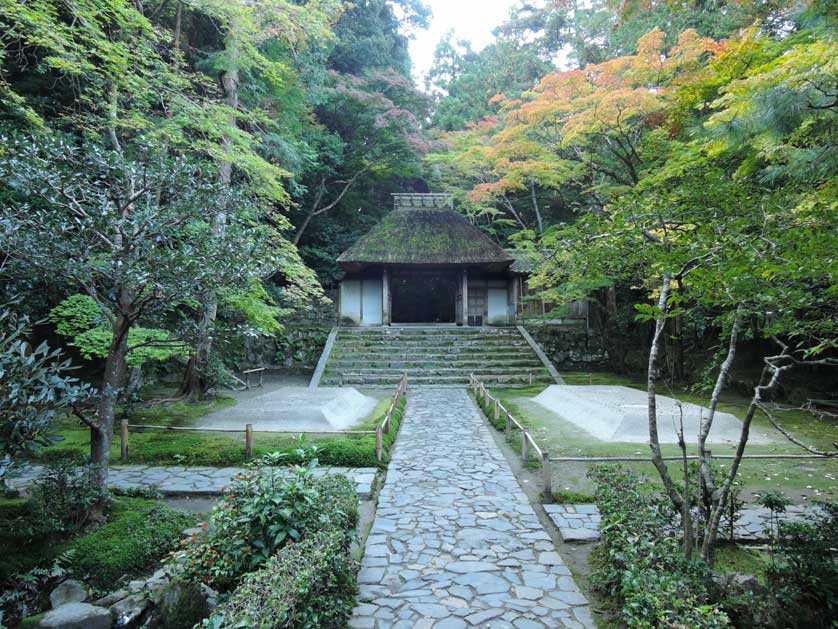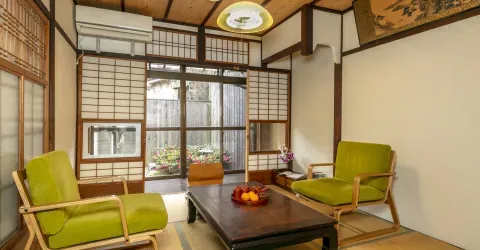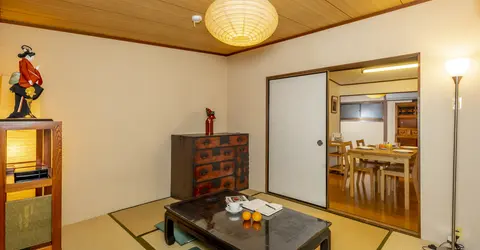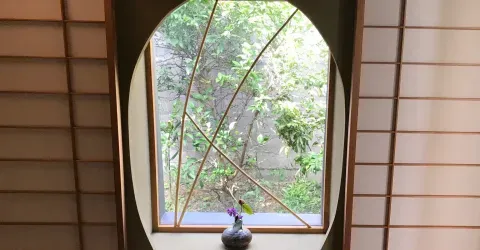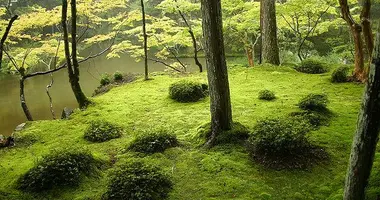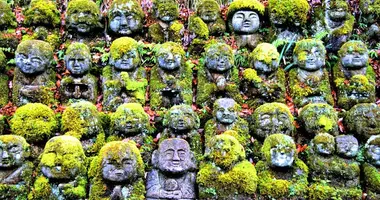Honen-in Temple Kyoto: A serene oasis on the Philosopher's Path
- Published on : 27/04/2024
- by : Japan Experience
- Youtube
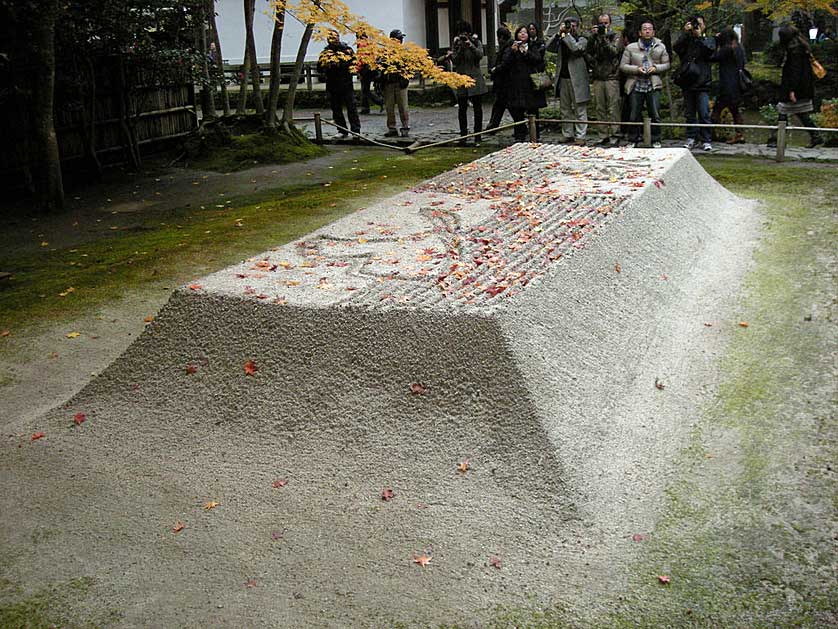
Honen-in Temple sand sculpture, Higashiyama, Kyoto
Nestled along the famous Philosopher's Path in Kyoto's eastern hills, Honen-in Temple stands as a hidden gem of tranquility and beauty. This small yet captivating temple offers visitors a peaceful retreat from the bustling city, inviting them to immerse themselves in its serene atmosphere and rich cultural heritage. Founded in 1680 to honor the Buddhist monk Honen, the temple has become a sanctuary for art, nature, and spiritual reflection. Its unique blend of traditional architecture, meticulously maintained gardens, and contemporary cultural events creates an enchanting experience for those who venture off the beaten path. As you step through its moss-covered gate, prepare to discover a world where time seems to slow down and the beauty of Japanese aesthetics unfolds before your eyes.
Overview and unique features of Honen-in Temple
Honen-in Temple is renowned for its exquisite blend of natural beauty and spiritual ambiance. As an independent Buddhist temple, it stands apart from many of Kyoto's more tourist-heavy sites, offering a more intimate and reflective experience. The temple grounds are characterized by their lush moss gardens, tranquil ponds, and carefully manicured landscapes that change with the seasons.
One of the most distinctive features of Honen-in is its commitment to art and culture. The temple regularly hosts exhibitions, concerts, and lectures in its converted auditorium, making it a vibrant center for cultural exchange. This unique approach to temple life, initiated by the current abbot Shinsho Kajita, has transformed Honen-in into a gathering place for artists, intellectuals, and spiritual seekers.
Visitors to Honen-in will also notice the temple's emphasis on contemplative spaces. From the moment you enter through the thatched gate, you're invited to slow down and observe the subtle details around you. The temple's layout encourages mindful walking and quiet reflection, making it an ideal spot for those seeking a moment of peace in their Kyoto journey.
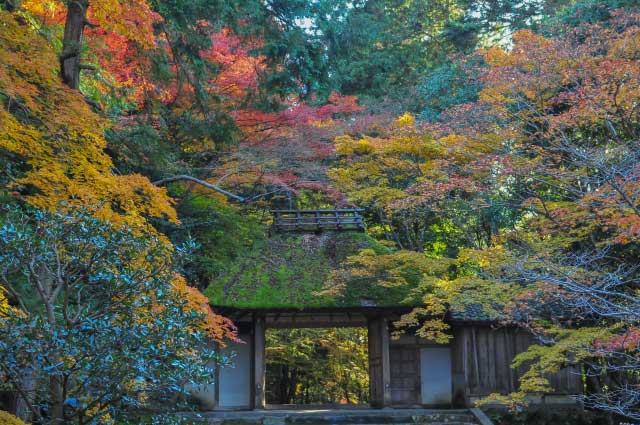
Honen-in, Higashiyama, Kyoto
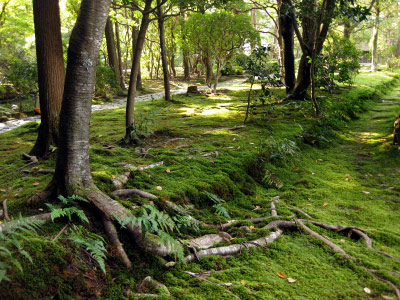
A view of moss and tree roots at Honen-in Temple in Kyoto
The iconic thatched gate and sand art gardens
The journey into Honen-in begins with its most iconic feature: the moss-covered thatched gate known as the Sanmon. This picturesque entrance, surrounded by towering trees and lush vegetation, immediately sets the tone for the serene experience that awaits. The gate's rustic charm and the way it frames the path beyond create a striking visual that has become synonymous with Honen-in's unique appeal.
Just beyond the gate lie two of the temple's most distinctive elements: the twin sand mounds called Byakusadan. These carefully raked sand gardens are more than just aesthetic features; they serve a symbolic purpose in Honen-in's history and spiritual practice. The sand mounds are meticulously maintained and feature intricate patterns that change with the seasons, offering visitors a constantly evolving artistic display.
The sand gardens represent purification, with visitors symbolically cleansing their minds and bodies as they pass between them. This ritual aspect of the temple's design adds a layer of spiritual significance to the visual beauty, inviting visitors to engage with the space on a deeper level.
Looking back towards the main Sanmon gate and sand sculptures, Honen-in, Higashiyama, Kyoto
Exploring the temple grounds and hidden gems
Beyond the iconic entrance, Honen-in's grounds unfold as a series of interconnected spaces, each offering its own unique atmosphere and points of interest. The main hall, while only open to the public during specific periods in spring and autumn, is a marvel of traditional Japanese architecture. Its interior houses important cultural treasures, including paintings by the renowned Kano school.
One of the hidden gems of Honen-in is its small but exquisite pond garden. Crossed by low stone bridges, this tranquil water feature is home to colorful koi and serves as a focal point for contemplation. The surrounding landscape, with its carefully placed stones and thoughtfully pruned trees, exemplifies the principles of Japanese garden design.
For those interested in art, the temple's gallery space is a must-visit. Located in a converted storehouse, this area hosts rotating exhibitions featuring both traditional and contemporary works. The juxtaposition of modern art within the historical setting of the temple creates a unique dialogue between past and present.

Sand sculpture freshly raked, Honen-in, Kyoto
Historical significance and connection to Pure Land Buddhism
Honen-in Temple holds a significant place in the history of Japanese Buddhism, particularly in relation to the Pure Land sect. The temple was established in 1680 to honor Honen (1133-1212), the founder of the Jodo (Pure Land) school of Buddhism. Honen's teachings, which emphasized the importance of faith in Amida Buddha and the recitation of the nembutsu (Buddha's name), revolutionized Buddhist practice in Japan by making it more accessible to common people.
The site of Honen-in is believed to be where Honen himself once had a small hermitage, adding to its spiritual significance. Although the temple later declared its independence from the Pure Land school in 1953, it continues to honor Honen's legacy and teachings.
Visitors interested in Japan's temples & shrines will find that Honen-in offers a unique perspective on the development of Buddhist thought in Japan. The temple's history reflects the broader evolution of Japanese Buddhism and its adaptation to local cultural contexts.

Honen-in Buddhist Statue, Kyoto
Cultural events and community engagement at Honen-in
One of the most distinctive aspects of Honen-in is its vibrant program of cultural events and community engagement. Under the leadership of the current abbot, the temple has become a hub for artistic and intellectual activities, hosting over 100 events annually. These events, known as "Sanga" (a Sanskrit word meaning "community"), range from Buddhist symposiums and tea ceremonies to concerts and art exhibitions.
The temple's auditorium, originally built as a large bathroom in the 17th century and renovated in 1977, now serves as a multifunctional space for these cultural activities. This repurposing of historical structures for contemporary use demonstrates Honen-in's commitment to remaining relevant and engaged with modern society.
Honen-in also sponsors nature walks in the surrounding area through the Honen-in Mori no Kyoshitsu (Forest Classroom), connecting visitors with the natural environment and promoting environmental awareness. These initiatives reflect the temple's holistic approach to spiritual and cultural enrichment, extending its influence beyond traditional religious practices.
Practical information for visitors
Honen-in Temple is open daily from 6:00 AM to 4:00 PM, offering visitors ample time to explore its grounds. Access to Honen-in is straightforward, with several options available depending on your starting point in Kyoto:
- From Kyoto Station: Take bus #5 to the Jodo-ji stop, then walk uphill for about 10 minutes.
- From Shijo Kawaramachi: Take bus #32 to the Ginkakuji-michi stop, followed by a short 5-minute walk.
- For those exploring the Philosopher's Path, Honen-in is a brief detour, located just a 5-minute walk from Ginkakuji Temple.
Admission to the temple grounds is free, making it an accessible option for all visitors. However, note that the main hall is only open to the public during specific periods:
- Spring opening: April 1-7
- Autumn opening: November 1-7
During these times, a small fee may be charged for entry to the main hall. For the most up-to-date information on events and special openings, visitors can check the official temple website at honen-in.jp (primarily in Japanese).
Nearby attractions and integration into your Kyoto itinerary
Honen-in's location along the Philosopher's Path makes it an ideal stop as part of a broader exploration of Kyoto's eastern hills. Visitors can easily combine a visit to Honen-in with other nearby attractions to create a full day of sightseeing:
- Ginkakuji Temple (Silver Pavilion): Just a short walk north, this UNESCO World Heritage site is famous for its dry sand garden and moss garden.
- Nanzenji: A major Zen temple complex located at the southern end of the Philosopher's Path.
- Philosopher's Walk: This picturesque stone path along a canal is particularly beautiful during cherry blossom season.
- Eikan-do: Another notable temple known for its autumn colors, located between Nanzenji and Honen-in.
To make the most of your visit, consider starting your day at Ginkakuji and slowly making your way south along the Philosopher's Path, stopping at Honen-in and other temples along the way. This route allows you to experience the tranquility of these sites in the morning before they become crowded.
For those interested in a deeper exploration of the area, renting a bicycle can be an excellent option. Many rental shops are available near Kyoto Station or in the downtown area. Alternatively, the Raku Bus offers a convenient way to access various points along the eastern hills.
By incorporating Honen-in into your Kyoto itinerary, you'll discover a peaceful haven that offers a perfect balance to the more crowded tourist sites. Its blend of natural beauty, historical significance, and cultural vibrancy makes Honen-in a truly unique experience in Kyoto's rich tapestry of temples and gardens.
